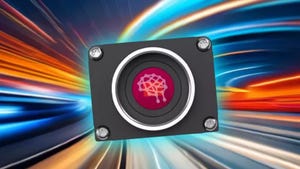April 26, 2010

Linearshaft servomotor technology provides three basic benefits: It is simple,consisting of only a magnetic shaft and a forcer; motors are high precision,taking advantage of its ironless design to offer zero cogging and completestiffness; and being a non-contact design, the shaft motor's non-criticalair-gap eliminates variation in force over the entire stroke of the device.
But now, the trends and focus is on newproduct variations that meet specific application needs and exploit theadvantages of the fundamental technology compared to other linear motorsolutions.
"What we did differently with the technologythan all the other cylindrical linear motor manufacturers is that they'vealways tried to adjust the windings," says Jerame Chamberlain, Linear ShaftMotor Product Manager for Nippon Pulse."The concept was that the magnets are the magnets, and it's just a matter of changingthe type of laminations and the winding type, lower or higher inductancewindings, to get more power out of the motor."
He says the design of Nippon's shaftmotor comes from a completely different perspective. Instead of looking at howto adjust the windings, the design focuses on increasing the strength of themagnets. The basic formula for the force a motor can provide is "force equalselectrical current times the magnetic field." Increasing the magnetic field decreasesthe amount of current required by the motor, and using less power means lessheat is going into the device.
"We've taken the same concept asthe U-shaped linear motor coreless winding and shaped it into a cylinder aroundthe magnets and a much stronger magnetic field," Chamberlain says. "It is a muchstiffer design, about one hundred times stronger than U-shaped motors, plus thereare no more Eddy currents, heat or cogging issues. The other design conceptthat makes it unique is the fact that all of the windings cross the magneticfield at a ninety degree angle. Unlike traditional U-shaped motors current is flowingin directions that oppose the direction of travel."
An inherent advantage of the technology isthat the design of the motor makes the air gap non-critical because the magnetis in the center, which makes alignment and installation of the device verysimple to do. The coil completely surrounds the magnet, so force is the net effectof the magnetic field.
The linear shaft motor provides atwo-fold benefit for the ultra-high-precision sub nanometer to high picometerpositioning. In those types of environments, users want the feedback right inthe center of the gravity of the device to get truly accurate positioning. Butyou also want your motion and the power creating the motion right at the centerof gravity of the device, and both pieces can't be in the same location.
By putting an encoder in the centerof gravity, and because the air gap is completely non-critical and the motorswill always make the same amount of force, two motors can be spaced an equal distanceoff the center line of the stage. Competing solutions often require two sets ofencoders and two servo drives to provide this functionality.
The linear shaft motor also doesn'trequire all of the magnetic pitches in the system to be 25-, 30- or 60-mm long,the standard for linear motors in the marketplace. This makes the paralleldrive system possible because the magnetic pitches are orders of magnitudelonger than that, reducing the sine error on any mounting irregularitiesbetween the two drives.
Designed for ultra-high-precision positioningmarkets, this capability is a huge advantage for gantry system buildersdesigning glass cutters or laser engravers. In the past, systems might have hadtwo ball screws connected through a chain, two different motors drivingseparate ball screws using two different controllers that would electronicallybe connected together, or even two linear motors with encoders electronicallyconnected together with two drives. Now that can be done with two shaft motors,one encoder and one amplifier.
Another key advantage of the linear shaftmotor is that its continuous current is based on just the motor in free air, absolutelyno heat sinking and no movement. Independent testing has documented that an aluminumheat sink about a quarter of inch thick and three times the surface area of themotor increases the heat dissipation of the motor so the current through themotor can be increased by a factor of 40 percent.
The cylindrical design of the shaft motor is alsobuilt with higher-grade-quality products than most linear motors. It's the onlylinear motor with a class H winding, which allows up to an 185C temperaturerise in the windings.
Nippon Pulse recently introduced its new L427series that features a 5-mm air gap between the forcer and magnetic shaft. Witha 5-mm air gap between the motor's forcer and shaft, users have moreflexibility when machining their device to level. It is also an optimalsolution in environments where there is the potential for buildup of debris onthe shaft because the air gap will prevent the motor from jamming and increasethe time required between cleanings.
Other new productdevelopments include low-profile, wider stages that Chamberlain says have thesmallest dead zone of any linear motor stage on the market. And for customers thatdon't need a longer magnetic pole pitch because they are not implementing aparallel design, new high-density, short linear motors reduce the overalllength by shrinking magnetic pole pitch
Linear Shaft Servomotors_A
About the Author(s)
You May Also Like





